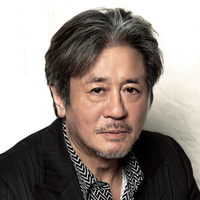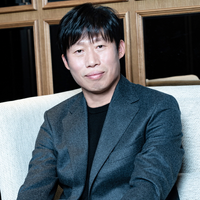
@themudang on Instagram / "Exhuma" Movie / Kpopmap
If there’s any cultural export from South Korea that has created a stir globally after K-Zombies and “Squid Game”, it is the K-Occult horror film “Exhuma”. Directed by one of the pioneers of Korean horror, Jang JaeHyun, known for masterpieces like “The Priests” and “Svaha: The Sixth Finger”, “Exhuma” has piqued the interest of a global audience, opening up a whole new avenue for the proliferation of Korean cinema.
Starring Chungmuro juggernauts Choi MinSik and Yoo HaeJin alongside Hallyu darlings Kim GoEun and Lee DoHyun, “Exhuma” spins a complicated yet deeply intriguing and engaging tale that weaves itself into history and across generations.
It all starts with “the Parks”, an inexplicably affluent Korean family living in the United States. After their newborn child falls victim to a generational curse, shaman duo, HwaRim (Kim GoEun) and BongGil (Lee DoHyun) are solicited for their services to heal the infant. However, what they discover is much more sinister. Haunting the family from beyond the grave is their ancestor, a pro-Japanese Korean soldier who has been “throwing a massive fit” for years. His grave needed to be exhumed. With a little help from geomancer SangDuk (Choi MinSik) and mortician YoungGeun (Yoo HaeJin), HwaRim and BongGil decide to take on the job in exchange for a fortune.
The case of the Parks, however, prefaces the true horror that lies at the center of the story, prodding the audience like a stab in the spine. If you’ve watched the movie, I have a feeling you’ll appreciate this segue into the second half of the film, characterized by a strange enigma – “the Fox split the spine of the tiger”.
With this, the film explores themes revolving around the Japanese occupation of Korea, incorporating supernatural elements like “Gisune”, a powerful Japanese onmyōji evoking the infamous yokai “Kitsune” or trickster foxes from Japanese folklore as well as other yokai like Nure-onna; the transformation of the flaming metal sword into an anima through a shogun, ultimately creating our primary antagonist; and unearthing the real reason behind the Parks’ misfortune.
In order to subdue and eliminate the shogun demon for good, our occult avengers bring together principles of shamanism, Taoism, and more, overcoming the vicious and allowing peace to prevail on Korean land – the land where their ancestors walked and where their descendants shall prosper.
The plot is intricately layered and incredibly well-written but the true strength of the film lies in the stunning performances by each and every cast member. While you may think Choi MinSik couldn’t possibly get any better, he proves you wrong, showcasing a whole new side of himself with the role of SangDuk. Cautious, yet determined, gravely serious yet surprisingly cute at times, SangDuk offers a grounding energy to the story, while Kim GoEun’s HwaRim elevates it to new heights.
With her role as HwaRim, Kim GoEun has unlocked a whole new goldmine of talent and potential that is captivating fans all over the world. This is Kim GoEun delivering genius unlike anything we’ve seen before. Not only has the actress outdone herself, but also the film industry, making a mark on a global scale. Kim GoEun is to “Exhuma” what Choi MinSik is to “Oldboy”. Such was the excellence in Kim GoEun’s performance, powerful enough to be generation-defining and truly transcendent, so much so that it will be remembered decades down the line and will continue to give us goosebumps even then. The way Kim GoEun ekes out the slightest and most detailed nuances in her character, and delicately knots them together to create the intimidatingly realistic figure of HwaRim speaks volumes of her unparalleled talent as an artist. No one, if not Kim GoEun, could have had a similar impact.
Needless to say, actor Yoo HaeJin was in his element of brilliance, bringing his character to life with utmost conviction, whereas Lee DoHyun imbued a sense of freshness into the story, putting the X factor in “Exhuma”. The cinematography was a work of art, and each frame a spellbinding portrait, enough to mesmerize the audience even as they’re petrified.
However, with all that said and done, “Exhuma” does leave quite a few questions unanswered, especially for those uninitiated in the ins and outs of Korean shamanism. I recognized this gap when I came out of the theatre with a look of both awe and confusion, as I was left pondering about the plot. After rewatching the film once more and doing due research, I was certainly able to piece together some puzzle pieces, but the desire to know more persisted.
So, I reached out to one of the coolest real Korean shaman I knew, Mudang Seonmi (she/they), @extinct on X, in hopes of interviewing her about “Exhuma” and hopefully finding some answers. Keep reading to see how our conversation went, and you might find some jewels of wisdom and knowledge that you didn’t expect, in addition to definite clarity about all the questions you had after watching “Exhuma”.
So, without further ado, let’s get into our interview!
Hello Mudang Seonmi! Can you please introduce yourself to global readers and tell us a little bit about yourself?
여러분 안녕하세요! (Hello everyone!) 🙏🏻 I was always able to see and communicate with spirits since I was about 10 years old – from there I practiced different spiritualities and magic, until I realized I was suffering spirit sickness (a prerequisite for someone meant to be a mudang) by being vetted by a few different mudangs in Korea. The last straw where I couldn’t disregard it anymore was when my dreams continued to get stronger, they were so vivid. My ancestors showed me and told me things I never would’ve known – for example, they gave me mudang sacred tools and told me I had to accept them, I couldn’t say no. Upon waking, I researched the items and discovered they were mudang tools often used in ceremonies.
I am in my 30s, have a family with my husband and stepson, and enjoy playing video games like Pokémon and binge watching shows (currently rewatching It’s Okay to Not Be Okay~).
I’m sure many readers will be curious about this. How and when did you become a Mudang? Please tell us about your given Mudang name and what it means.
I became a mudang in 2017 when I underwent an initiation ceremony in a hypertraditional lineage. I trained with them for a few years before breaking off, continuing training with a different elder, and now am in this semitraditional lineage as we know it today.
**Side note: All people who call themselves mudangs MUST go through the initiation ceremony with an elder mudang. Without that ceremony and training, calling themselves a mudang is a huge offense to the heavens and gods. So be careful out there! There are people calling themselves a mudang (even saying they’ve had the initiation ceremony but no proof of such happening) who will end up causing others to get hurt.**
My given mudang name is 작두여장군 무당 Jakduyeojanggun Mudang. This is the older tradition style, where mudangs will have their strongest god as a mudang name for the public to address them as. I do still also go by my Korean name though, so you may see me as Mudang Seonmi also.
The Korean film “Exhuma” is a viral sensation and is popularizing Korean occult horror all over the world. What did you think of “Exhuma” and its portrayal of shamans and shamanistic rituals?
I think “Exhuma” is one of the best media representations we’ve seen of us in a long time! The directors and producers went out of their way to consult an elder manshin (manshin is a term for mudangs who have reached 10-20+ years practice) and have the actors specifically study and train with them to show us and what we do properly.
I understand there are different types of shamans. What kind of shaman are HwaRim & BongGil?
HwaRim and BonGil are kangshinmu – anthropologists have translated this to mean something like “charismatic/ecstatic shaman” which means we experience possession by our gods and spirits. A kangshinmu mudang undergoes suffering with spirit sickness and must go through initiation ceremony and training with an elder.
Please explain a little bit about the importance of the tattoo on BongGil’s body. Is it a common practise in Korean shamanism?
The tattoo on BongGil’s body is a temporary precaution, meant to act as a symbolic form of a bujeok (talisman) for protection. The sutra itself that is on his body is the 태을보신경 (Taeulbosingyeong), a sacred sutra of protection (in a really broad, general description). Because the time staking process of painting that on someone’s body, we chose traditional paper talismans instead.
One of the core themes of the film revolves around how “the fox split the spine of the tiger”. Can you please explain what this means?
This line was really clever! It is symbolically referring to the metal stakes that the Japanese regime periodically placed along our borders. It is referring to the magical attempt of their state shinto sorcerers to keep the energy of our country “severed”, as in not whole and not in balance. When energy is not in balance, great misfortune tends to happen.
Can you please explain what is happening in the Daesalgut scene for our global readers?
The Daesalgut is a grand ceremony in which animal sacrifices are offered to the bloody dead in order to satiate them so they don’t have resentfulness and don’t cause misfortune. This was important to do before the geomancy master exhumed the grave, to ensure the ghost would not be angry at its grave being disturbed.
Many viewers are curious about the 도깨비놀이 (goblin play) scene. What is 도깨비놀 (goblin play)? Please tell us a little bit about it and why it is performed. Also, please tell us about the talisman (if that’s what it is) that is placed on BongGil during this scene.
Goblin play is when a mudang calls down a Goblin God in order to “play” – we say this for many gods in fact. I will tell my apprentices they are bringing their gods down to play – which means having the god possess them, dance, sing, eat, give 공수 god fortune telling, and interact with the client/client family to give blessings/protection/cleansing etc.
In the scene that BongGil has a paper talisman placed onto him is actually during a separate ritual – a form of an exorcism ritual, called Daesudaemyeong. This utilizes (usually) a live chicken that will be sacrificed for the person to live. In our indigenous folk religion, something must be given in order to receive.
Were there any particular details in the portrayal of actors Kim GoEun & Lee DoHyun that you thought were extraordinarily well done?
I was personally so proud and impressed to see how well they studied and trained with the elder manshin! They did so well with the drum/gong beats, chanting the real sacred sutras (which is not standard korean, it is in an archaic korean that is very difficult for even native Koreans to understand), and Kim GoEun’s motions during the Daesalgut! I really loved this movie because of their hard work and practice.
Can you please elaborate on the grandmother goddess who accompanies HwaRim? When the Oni came face to face with her, it seemed like the Oni was powerless before her. Why is that?
HwaRim’s grandmother goddess could technically be anyone because many of her pantheon would technically be a “halmeoni” to her – but the ceremonial garb of that deity makes the god likely to be Bulsa Halmeoni, a goddess of healing, purity, and protection. I’ve seen someone mention they thought she was Samshin, which is another possibility, who is a goddess of Childbirth and children and women. Though because of these associations, I find Bulsa Halmeoni to be much more likely.
The Oni was powerless because he was a twisted convoluted human soul – not a true god. Bulsa Halmeoni is a true god.
Are there any hidden symbols or nuances in “Exhuma” that fans may not have noticed but as a shaman yourself, you spotted easily?
There’s sooo many layers to this movie, I couldn’t possibly go into them all! But one I noticed that was a really cool part of the plot (so maybe this isn’t hidden or nuanced) – it very much is like this in real life though!
The collaboration of many paths to one collective goal (helping someone) can be done together, side by side, without impeding on the other practice. We happily encourage seeing multiple professionals on a situation if we ourselves cannot do it alone – you see this in “Exhuma”: shamanism, geomancy, and even Christianity to a degree, all on the same side.
Do you think “Exhuma” has changed the perception of shamans in a more positive direction with the help of MZ generation shamans HwaRim & BongGil?
I would not be surprised if things are turning around with this movie to see us in a more positive light. I should hope so anyway – “Exhuma” shows that we are professionals in our own right and are dedicated to serving and helping our community. And we are human at the end of the day, and can be scared or frightened by unseen things just like you! We’re simply more used to seeing and talking to them, and with our gods, protected – but it doesn’t change that I can be easily startled seeing a ghost when I turn a corner.
Finally, thank you so much for joining us for this interview, Mudang Seonmi. It was truly an enlightening discussion, which I’m sure fans of “Exhuma” will thoroughly enjoy.
Thank you so much for having me! If you’re curious about me, please see my website – firelightlotus.com. I welcome clients of ALL backgrounds and cultures! I post articles about Korean gods and Korean folk magic.
So, there we have it! Did you enjoy our interview with Mudang Seonmi? Then, we have one more thing in store for you!
Mudang Seonmi will be answering some of YOUR questions, whether that be about herself, her practice, Korean shamanism in general, or “Exhuma”. Leave your questions in the comments down below and quench your curiosity right from the source!





